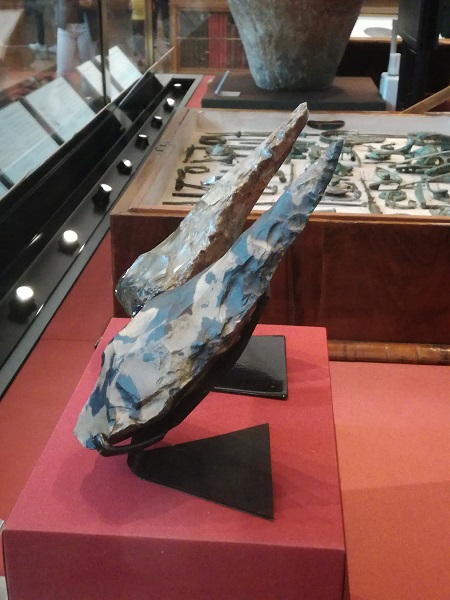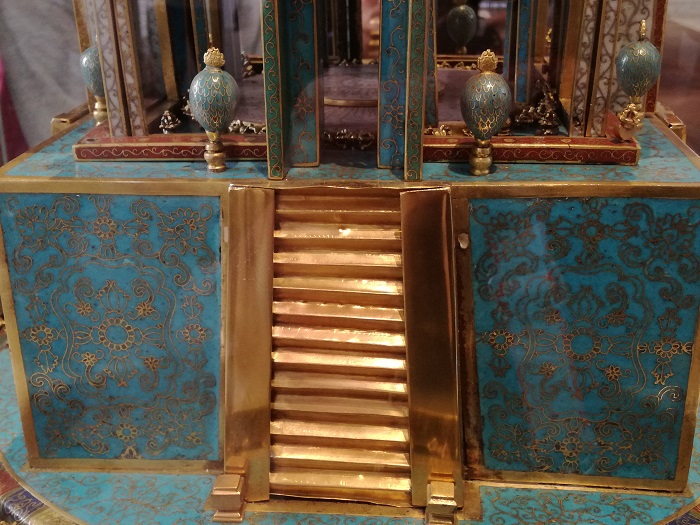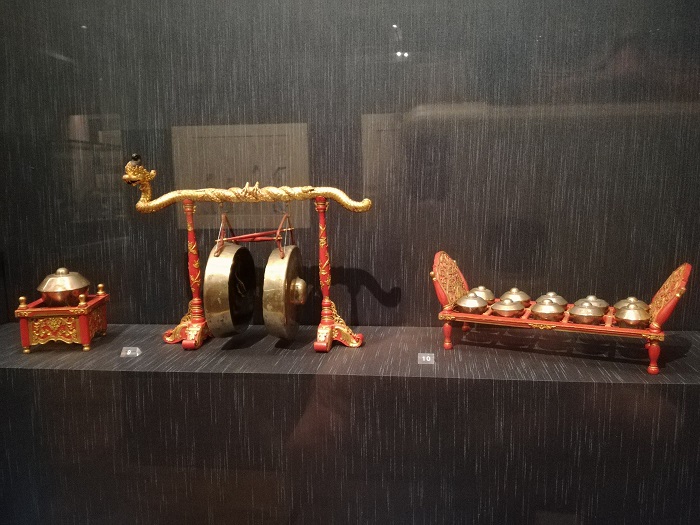Treasures At The British Museum
Shoulder clasps from the permanent display of the Sutton Hoo hoard
Last Saturday, the boys and I travelled up to London to the British Museum. To begin with, I thought I’d be going on my own as there was a particular display I wanted to see, to do with the discovery at Sutton Hoo. But when I asked the boys, they said they wanted to come to.
It was a lovely day; the sun was shining, and the travel was hassle-free.
I like the look of the building, especially the ‘bronze’ dome and the glimpse of graffiti
All the times I’ve walked past, I only recently noticed this sign!
The museum wasn’t that crowded, which makes it so much easier to see what you want to see. The great thing about the boys being older, we can head off and do our own things, which is what we did, agreeing on a time to meet for lunch.
I headed off to Room 2, to see the temporary display, which is only there until early October. A little history lesson to explain the treasure I wanted to see. Back in 1938, the owner of the estate at Sutton Hoo in Suffolk, Mrs Edith Pretty, decided to see what was under a group of man-made mounds. She asked a local man, Basil Brown, to investigate. He was a self-taught archaeologist and astronomer and supplemented his income by doing odd jobs and some archaeological work.
He excavated three of the mounds at Sutton Hoo only to find they had been disturbed. They did contain some Anglo-Saxon objects, but there were only fragments of grave goods.
But in one of the mounds, Brown recognised ship rivets that had long ago turned rusty. Gradually, he realised he had discovered the remains of an Anglo-Saxon ship burial. There were also, among other things, fragments of a sword and a silver buckle.
Ship rivets found by Basil Brown
The following summer, Mrs Pretty once again invited Brown to excavate the largest mound. Grave robbers had dug through here as well but, as luck would have it, they hadn’t dug far enough.
Again, Brown discovered ship rivets, which he left in place and carefully worked around them. In doing so, he uncovered the full shape of the ship. The wood had rotted away but the impression of the ship was still in the ground. And this mound contained an undisturbed burial chamber.
By now, the importance of the site had attracted the attention of the authorities. Charles Phillips, an archaeologist from Cambridge University, was brought on to oversee the operation, but he insisted Basil Brown remain as his assistant.
In July 1939, the burial chamber was excavated, and the treasures were revealed. Among them, silver dishes, gold buckles, ornaments decorated with garnets and glass, weapons and armour.
Description of the shoulder-clasps pictured at the top of the post.
Double-edged sword – “In early Anglo-Saxon England swords were the most prized weapons of all, given as gifts by lords and passed on as heirlooms. The Sutton Hoo sword is the finest known from the period. The double-edged iron blade was fitted with gold hilt (handle) pieces. They are decorated with garnets imported from southern Asia, set into gold cells (cloisonné). It was buried in a wooden leather-bound scabbard, lined with wool to keep the blade bright.” (permanent display)
Gold and cloisonné detail on sword
Because of the value of the treasures, an inquest was held to determine if the find was a ‘treasure trove’ – had it been buried with the intention of being retrieved at a later date – in which case it would be the property of the Crown. Because the Sutton Hoo find was a grave, it was found not to be a ‘treasure trove’, which made it the property of Mrs Pretty. She then bequeathed it to the nation, making it the most generous donation ever made to a museum.
So, the temporary display I was determined to see – the notebooks and photographs of Basil Brown. It’s only a modest display and because the people around me didn’t appreciate the treasure on show, I had the time to really soak in the history of the pieces.
Letter from Mrs Pretty confirming Basil Brown’s arrival
Drawing in Basil Brown’s notebook, detailing the position of the rivets and the shape of the ship
Letter from Charles Phillips describing the pyramid-shaped items
The beautiful items described in Charles Phillips’ letter
Photos of the dig
Basil Brown and Charles Phillips at the dig site
Page from Basil Brown’s notebook about the ‘treasure trove’ inquest
Newspaper article in Basil Brown’s notebook about the inquest’s finding
I then wandered around the museum, making a point to go to displays I either haven’t seen or haven’t been to in ages. These are only a fraction of the displays in the Enlightenment Room.
The Polden Hill hoard, found at Polden Hill in Somerset – shield boss and horse ornaments, bridle bits and enamelled harness fittings. The hoard was buried by the native inhabitants of Iron Age Britain around 3rd century BC
“In 1741, Peregrine Bertie reported this find of ancient weapons to the Spalding Gentlemen’s Society in Lincolnshire. The rapier, swords and spearhead may be a set of personal arms. Bertie wrote that when they were found, the edges were ‘so Sharp as to Cut their fingers, But since, They have Tried the metal of ‘em so often… that they have a Little Notched and Blunted ‘em.’ They later entered King George III’s small armoury collection.”
The William Allen box – “made in the late 17th century, a rare survival of an antiquary’s private collection. It belonged to William Allen (1808-1897), member of a prominent Quaker family. Allen had a passion for material from Roman Britain… The tray… is one of three in the box and contains mostly bronze brooches and hair pins”.
The Gray’s Inn Lane hand axe and one of the Hoxne hand axes – the Gray’s Inn Lane hand axe “was found in London with the remains of an elephant.” Both axes are “now known to date from the Ice Ages around 400,000 years ago.”
It was a bit of a challenge taking photos in the China section as there were so many Chinese people. I actually found it delightful, watching them enjoy the items on display. I spent time taking photos of this cloisonné mandala because of the exquisite detail.
“The Qianlong emperor (ruled 1736-1795) commissioned a series of cloisonné enamel mandalas (microcosms of the universe in which the Buddha resides). They were used in the Tibetan-style palaces at his summer resort in Chengde. This mandala is dated 1772 and decorated with cloisonné inlaid with coral. The bells that hang from the roof edges are made of jade and silver. It originally housed a figure of the Buddha.”
Cloisonné mandala - jade and silver bells
Cloisonné mandala - where the statue of the Buddha was originally housed
Top of the cloisonné mandala
I had to take a photo of this Kuan Yin statue as I’m rather partial to her.
This Buddha is in the Korean section. The iron statues were often coated in laquer and gilded.
Iron Buddha statue from the Goryeo period AD900-1000
Another display I wanted to visit was the Stamford Raffles collection of, mainly, Javanese artefacts (until 12 Jan 2020).
Gendér and beater - 1700s-1816. Probably Surabaya-Gresik region, eastern Java
A musical performance of ‘wayang kulit’ or shadow puppetry
Miniature models of musical intruments, easier to transport I suppose.
Quiver of arrows (apologies, forgot to make a note of the date)
‘Kris’ - traditional Malay weapon. The detail on the scabbard is exquisite as seen in the next photo.
From the Batak people of northern Sumatra
Raffles also collected more than 120 metal and stone sculptures of, mainly, Buddhist deities.
The Buddha Amitabha
The Bodhisattva Avalokitesvara
Bodhisattva Tara
Bodhisattva Manjusri









































